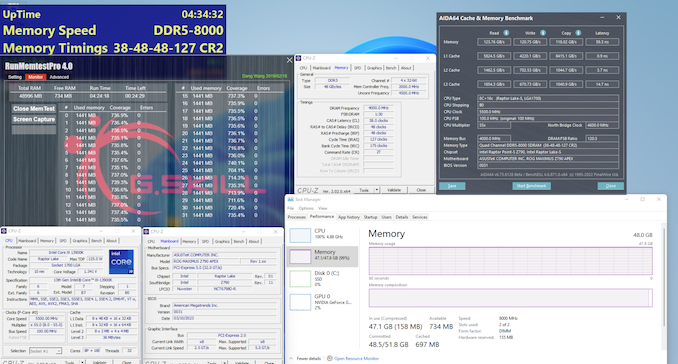https://ift.tt/BMl2vTu

Lenovo has introduced its all-new ThinkStation machines designed for performance-hungry professionals. The new ThinkStation P-series lineup consists of four machines based on up to two Intel Sapphire Rapids processors and up to four Nvidia RTX-series professional graphics cards. One of the interesting wrinkles in Lenovo's announcement is that the chassis of the new workstations were co-designed with Aston Martin, an automaker whose designers use ThinkStations to build cars.
Lenovo's latest ThinkStation P-series family of workstations is composed of three base machines: the top-of-the-range ThinkStation PX based on two 4th Generation Xeon Scalable 'Sapphire Rapids' processors with up to 120 cores in total as well as up to four Nvidia RTX 6000 Ada Lovelace graphics cards with 48GB of GDDR6 memory onboard; the high-end ThinkStation P7 powered by Intel's Xeon W-3400-series processor with up to 56 cores and up to three Nvidia RTX 6000 Ada Lovelace graphics boards; and the relatively compact ThinkStation 5 with Intel's Xeon W-2400-series CPU featuring up to 24 cores as well as up to two Nvidia RTX A6000 Ampere-based graphics cards with 48GB of memory that can be connected using NVLink. The updated ThinkStations have a baseboard management controller and can be serviced remotely.

Rob Herman, the Vice President of Lenovo's Workstation and Client AI Business Unit states, "We partnered closely with Intel, Nvidia, and Aston Martin to ensure these new systems offer the best of form and functionality by combining a premium chassis with ultra high-end graphics, memory, and processing power."
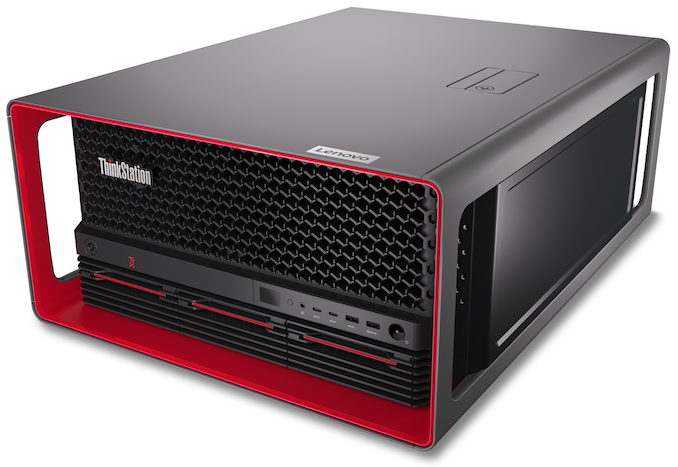
Lenovo ThinkStation PX
Speaking of Aston Martin, all the workstations have a chassis featuring a front panel inspired by the front grill of Aston Martin's DBS vehicles (e.g., the Aston Martin DBS Superleggera). The chassis, co-designed by Lenovo and Aston Martin, features Lenovo's tri-channel cooling system and can be serviced without using tools.
| Lenovo ThinkStation P5, P7, and PX: General Specifications |
| AnandTech |
ThinkStation P5 |
ThinkStation P7 |
ThinkStation PX |
| CPU |
Xeon W-2400
up to 24 cores |
Xeon W-3400
up to 56 cores |
2x Xeon Scalable
up to 120 cores |
| Chipset |
W790 |
W790 |
C741 |
| RAM |
Up to 512 GB DDR5-4800 with ECC |
Up to 1 TB DDR5-4800 with ECC |
Up to 2 TB DDR5-4800 with ECC |
| GPU |
up to 2 x Nvidia RTX A6000
Ampere |
up to 3 x Nvidia RTX 6000
Ada Lovelace |
up to 4 x Nvidia RTX 6000
Ada Lovelace |
| Storage |
Up to 6 total drives:
M.2: 3 (12 TB)
3.5": 3 (36 TB)
RAID:
M.2: 0/1/10/5
SATA: 0/1/5 |
Up to 7 total drives:
M.2: 4 (16TB)
3.5": 3 (36TB)
or
Up to 6 total drives:
M.2: 5 (20 TB)
3.5": 1 (12 TB)
RAID:
M.2: 0/1/10/5
SATA: 0/1/5 |
Up to 9 total drives:
M.2: 7 (28 TB)
3.5": 2 (24 TB)
or
Up to 7 total drives:
M.2: 3 (12 TB)
3.5: 4 (48 TB)
RAID:
M.2: 0/1/10/5
SATA: 0/1/10/5 |
| Expansion |
2x PCIe 5.0 x16
1x PCIe 4.0 x8
3x PCIe 4.0 x4 |
3x PCIe 5.0 x16
1x PCIe 4.0 x16
1x PCIe 4.0 x8
1x PCIe 5.0 x4
1x PCIe 4.0 x4 |
Dual CPU system:
4x PCIe 5.0 x16
4x PCIe 4.0 x16
1x PCIe 4.0 x8
Single CPU system:
2x PCIe 5.0 x16
2x PCIe 4.0 x16 |
| Networking |
1GbE
Wi-Fi 6E 2x2 + BT 5.2 |
10GbE
1GbE
Wi-Fi 6E 2x2 + BT 5.2 |
10GbE
1GbE
Wi-Fi 6E 2x2 + BT 5.2 |
| I/O |
Front Ports:
Audio Combo Jack
Optional Front Ports:
2x USB-A 3.2 Gen 2
2x USB-C 3.2 Gen 2
Rear Ports:
2x USB 2.0
3x USB-C 3.2 Gen 2
1x USB-C 3.2 Gen 2x2
1GbE
Line in
Line out
Serial (optional) |
Front Ports:
Audio Combo Jack
Optional Front Ports:
2x USB-A 3.2 Gen 2
2x USB-C 3.2 Gen 2
Rear Ports:
2x USB 2.0
3x USB-A 3.2 Gen 2
1x USB-C 3.2 Gen 2x2
1GbE
10GbE
Line in
Line out
Serial (optional) |
Optional Front Ports:
2x USB-A 3.2 Gen 2
2x USB-C 3.2 Gen 2
Rear Ports:
2x USB 2.0
4x USB-A 3.2 Gen 1
1x USB-C 3.2 Gen 2x2
1GbE
10GbE
Ethernet
Line in
Line out
Serial (optional) |
| Dimensions |
(mm): 165 x 453 x 440
(inches): 6.5 x 17.8 x 17.3 |
(mm): 175 x 508 x 435
(inches): 6.9 x 20 x 17.1 |
(mm): 220 x 575 x 435
(inches): 8.7 x 22.6 x 17.1 |
| PSU |
750W
1000W |
1000W
1400W |
1850W
optional redundancy |
| Security |
TPM 2.0
Self-healing BIOS
Power On Password
UEFI Secure Boot
Kensington Lock Slot
Padlock Loop |
TPM 2.0
Self-healing BIOS
Power On Password
UEFI Secure Boot
Kensington Lock Slot |
| OS |
Preloaded:
Windows 11 Pro for Workstation
Windows 10 Pro for Workstation (preinstalled through downgrade rights in Windows 11 Pro)
Ubuntu Linux
Supported:
Windows 10 Enterprise Edition
Red Hat Enterprise Linux (certified) |
ThinkStation PX: An Ultimate Machine
The range-topping Lenovo ThinkStation PX is an old-school no-compromise dual-socket workstation with up to two Intel 4th Generation Xeon Scalable processors based on the latest 120 general-purpose cores coupled with up to 2 TB of DDR5-4800 memory as well as up to four Nvidia RTX 6000 Ada 48 GB GDDR6 graphics cards. Regarding storage, the ThinkStation PX can house three or seven M.2 SSDs and four 3.5-inch hard drives. Depending on the configuration, the Lenovo ThinkStation PX offers various levels of storage capacity, with 28 TB or 12 TB of NAND flash storage and up to 24 TB or 48 TB of HDD storage. For the first time, Lenovo's most powerful workstation cannot be equipped with an optical disk drive.
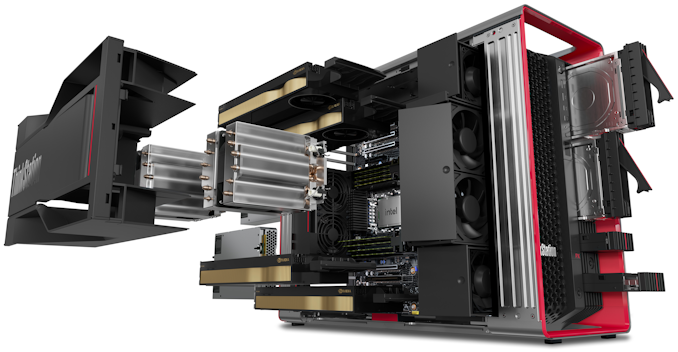
Connectivity and expansion (or rather flexibility) are among the key features of workstations since these machines are used for a wide range of professional applications, including animation, professional visualization, simulation, rendering, and video editing, among other things. To address these needs, the ThinkStation PX can be equipped with up to four PCIe 5.0 x16 add-in-boards (e.g., four graphics cards), four PCIe 4.0 x16 AIBs, and one PCIe 4.0 x8 card. The machine also has one 10GbE port, one GbE connector, an Intel AX210 Wi-Fi 6E and Bluetooth 5.2 adapter, one USB 3.2 Gen2x2 Type-C on the back, multiple USB 3.2 Gen2 Type-A and Type-C on the front and on the back, and audio connectors. Surprisingly, the workstation lacks Thunderbolt 4 or USB4 connectivity.
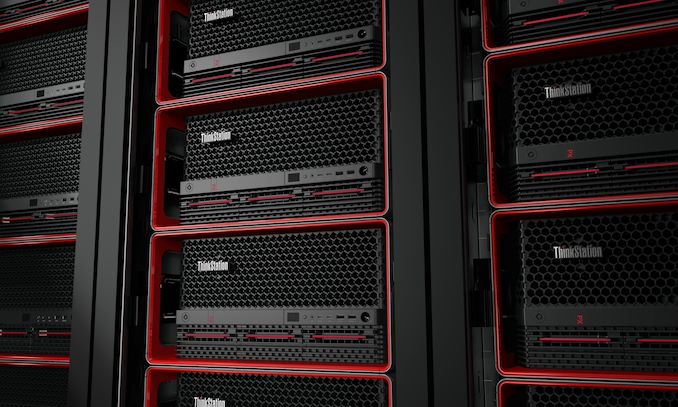
While the ThinkStation PX is an ultimate machine with unprecedented performance, Lenovo understands that such dual-socket workstations are headed for extinction. The system comes in a rack-optimized chassis and can be used remotely and/or for virtual desktop infrastructure (VDI) applications.
ThinkStation P7: A Versatile Xeon W Workstation
Lenovo's ThinkStation P7 sits below the PX, but this single-socket machine offers formidable performance to address the needs of demanding architects, content creators, designers, engineers, and data scientists. Just like its bigger brother, this unit comes in a rack-optimized case.

The ThinkStation P7 machine packs Intel's Xeon W-3400-series CPU with up to 56 cores accompanied by up to 1 TB of DDR5-4800 memory and up to three Nvidia RTX 6000 Ada graphics cards with 48 GB of memory. The machine can be equipped with up to four M.2 SSDs and three 3.5-inch hard drives that provide up to 52TB of storage space.
As for expansion capabilities, the unit can accommodate three PCIe 5.0 x16 AIBs, one PCIe 5.0 x4 card, one PCIe 4.0 x16 board, one PCIe 4.0 x8 AIB, and a PCIe 4.0 x4 card. It has one 10GbE port, one GbE connector, an Intel AX210 Wi-Fi 6E and Bluetooth 5.2 adapter, a USB 3.2 Gen2x2 Type-C on the back, multiple USB 3.2 Gen2 Type-A and Type-C ports, and audio jacks. Again, the machine lacks TB4 and USB4 connectivity.
ThinkStation P5: Compact and Powerful
The ThinkStation P5 may not be as advanced and powerful as the P7 and PX, but it packs more punch than almost any high-performance desktop and is aimed at a variety of performance-hungry workloads. Meanwhile, measuring 165mm x 453mm x 440mm, this relatively compact traditional desktop is not meant for rack installation (although this is probably not completely impossible with appropriate third-party kits).
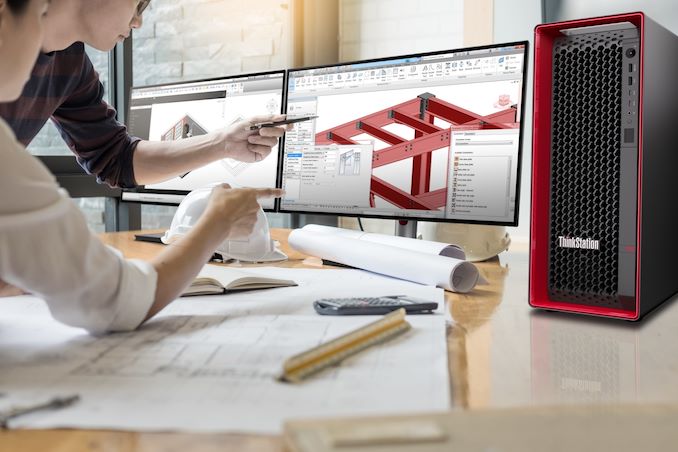
Lenovo's ThinkStation P5 is powered by Intel's Xeon W-2400-series processor with up to 24 cores that is mated with up to 512 GB of DDR5-4800 memory and up to two Nvidia RTX A6000 graphics boards with 48 GB of GDDR6 SGRAM that can be connected using NVLink with each other. The workstation can be equipped with three M.2 SSDs and three 3.5-inch HDDs for a total of 48 TB of storage space.
The machine has two PCIe 5.0 x16 slots, one PCIe 4.0 x4 slot, and three PCIe 4.0 x4 slots. It also comes with a GbE, an Intel AX210 Wi-Fi 6E and Bluetooth 5.2 adapter, a USB 3.2 Gen2x2 Type-C port, several USB 3.2 Gen2 connectors, and audio jacks. Unfortunately, the system lacks Thunderbolt 3 and USB4 ports.
Availability and Pricing
Lenovo plans to start selling its new ThinkStation PX, P7, and P5 workstations this May. The company does not disclose the pricing of these machines, though they will likely resemble the prices of its current-generation dual-socket and P700 and P500-series machines.


from AnandTech https://ift.tt/ltEZmIH
via
IFTTT

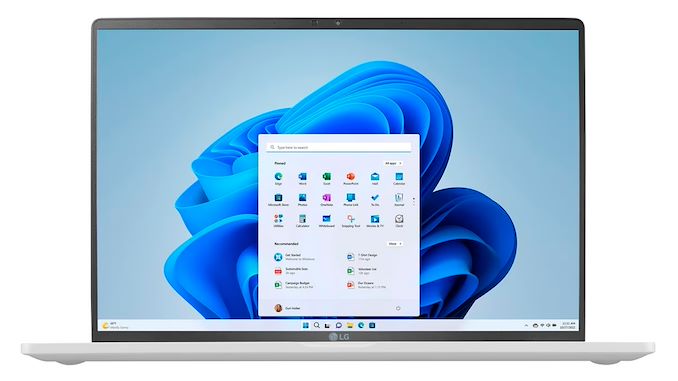
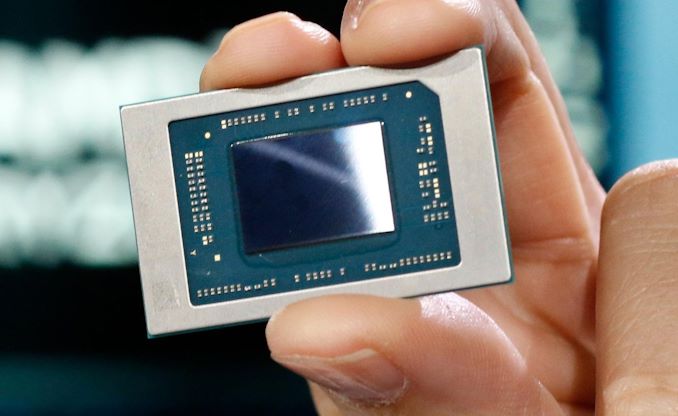

_575px.jpg)
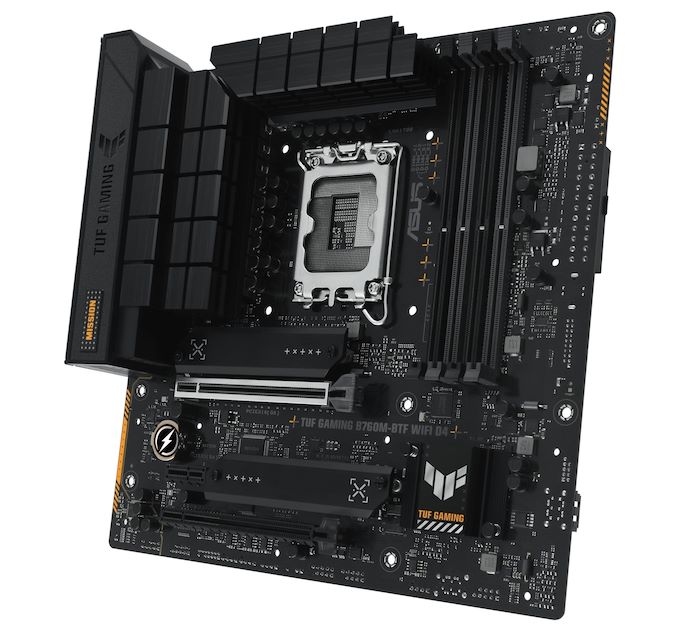
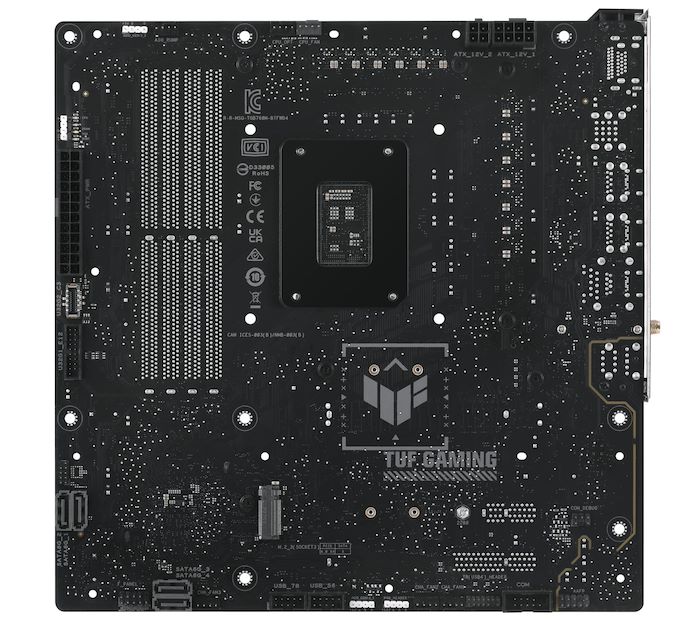
_thumb.jpg)
_thumb.jpg)
_thumb.jpg)
_thumb.jpg)
_thumb.jpg)
_thumb.jpg)

